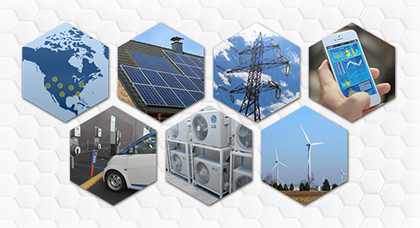Enterprise Mobile App Development : Dallas Fort Worth Metroplex
The Smart Meter + App Development
The Smart Grid refers to a model for energy providers to monitor and communicate with the electric grids while delivering power. This model is already in the process of implementation by the Federal government, power companies around the US, and other countries. You can already see the changes by looking outside at your power meter, as most citizens will see a new Smart meter instead of the old meter with the spinning disk.
With the advent of Smart Meter initiatives, data is typically available on a subscription basis over XML-based API’s. Data can be analyzed on reports to audit energy billings, negotiate terms with Retail Electric Providers, or adjust operations around more favorable tariff structures. Connecting smart meter data to enterprise app development allows operators to monitor and trend data without spreadsheet manipulation.
 With the aging power grids of the late 1890s giving way to the new concept of the Smart Grid, this emerging operating model provides new capability to monitor, and ultimately manage, the network of transmission lines, substations, transformers and more that deliver electricity to business. Smart meters change the way power companies can monitor and present power consumption data and usage statistics. They are different from older meters in the way that they allow two-way communication between the meter and the data source using Radio Frequency (RF) technology. Older meters only sent data about usage to the data source or were completely manual and required the meter to be read monthly. What does this two way communication mean to you? For one, power delivery companies can now give you up-to-date reports for power consumption in as precise as 15 minute increments. This allows for consumers to easily monitor spikes and discern what their consumption trends are. Smart meters also allow for interface with smart devices in the home and at the location.
With the aging power grids of the late 1890s giving way to the new concept of the Smart Grid, this emerging operating model provides new capability to monitor, and ultimately manage, the network of transmission lines, substations, transformers and more that deliver electricity to business. Smart meters change the way power companies can monitor and present power consumption data and usage statistics. They are different from older meters in the way that they allow two-way communication between the meter and the data source using Radio Frequency (RF) technology. Older meters only sent data about usage to the data source or were completely manual and required the meter to be read monthly. What does this two way communication mean to you? For one, power delivery companies can now give you up-to-date reports for power consumption in as precise as 15 minute increments. This allows for consumers to easily monitor spikes and discern what their consumption trends are. Smart meters also allow for interface with smart devices in the home and at the location.
The data that is sent up by the devices in the home or at the location can then be split out and displayed along with your usage information to give you a more in-depth look of the exact usage of a device. Some great examples of this are the smart thermostats and attaching a smart metering tool to an already existing appliance. This would allow you to then get an accurate and in-depth look at the power consumption of the device as well as compare it to the weather at the time.
The two way nature of the Smart Grid also lets the grid talk with your devices. Some uses of this communication are the ability for a device to decide if it will turn itself on or off based upon the current power demand (energy cost); allowing you to manage power consumption of non critical devices during the most expensive parts of the day. This two way control will also allow you to manage and control your devices from a remote location using the internet.

